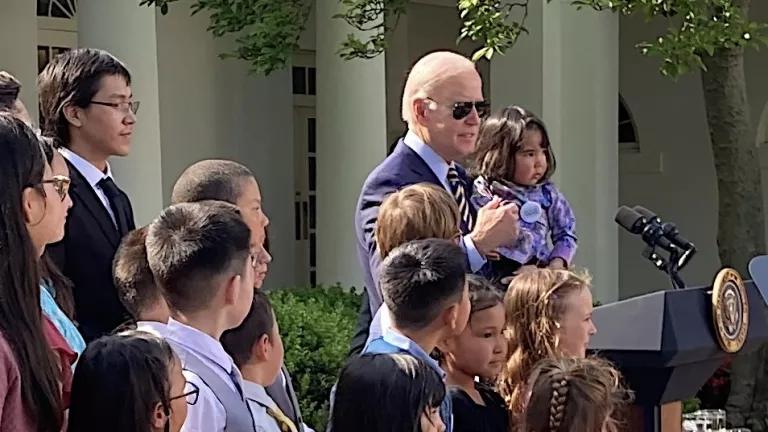The Real-Life Stories Behind the Federal Budget Numbers

Guest blog by Brianna Johnson-King, NRDC Stanback intern
Policymakers in Washington can get caught up in technicalities and number-crunching and lose sight of individuals whom their policies are affecting. This underscores the importance of stories to add meaning and depth to figures in spreadsheets.
In mid-August I traveled to my hometown of Columbus, Ohio, to collect stories from residents, contractors, and property managers who have benefited from or administered federal programs. These programs include the Low-Income Home Energy Assistance Program (LIHEAP), the Weatherization Assistance Program (WAP), the Low-Income Housing Tax Credit (LIHTC) and project-based multifamily rental assistance programs.
Latice is a mother of three, including fraternal twins soon to be 20 years old and a two-year-old son. Her 12-year-old son recently passed away.
Latice wants to provide everything to her children, but as a single mother this has been challenging. Her salary from working at Popeye’s made it a struggle to pay for rent, utility bills, food, clothing, and books for her children. As a result, Latice and her family slipped into homelessness. Over two years ago, she applied to Community Properties of Ohio (CPO) housing, which helps residents with the cost of rent through federal and state rental assistance programs. Latice and her family were accepted and soon moved into an apartment she could call home.
Most importantly, through CPO and funding from HUD and LIHEAP, Latice learned how to plan her finances. Living on a budget allows her to have a set payment each month.
“Being on the budget with your rent, your gas, your electric, it’s like a stress reliever…on top of being a single parent…because you need these things to take care of your children,” she told me.
When given the chance by CPO housing, Latice has worked hard these past two years to pay her rent and utilities on time every month. Shenow receives “loyal customer” letters in the mail.
One day Latice hopes she can afford her $200-$300 utility bill, but she isn’t there yet. Although she doesn’t want to rely on these programs for the long term, she needs them to survive and raise her children now.
Housing and energy assistance help individuals in many situations and stations in life, including senior citizens and working families struggling to make ends meet.
“If I didn’t have this place, I wouldn’t have any place to live. I would be out on the streets,” Latice said.
Elizabeth moved into the Ravine at Central College five and a half years ago. Rent costs are lower than market prices thanks to Low-Income Housing Tax Credits. As Elizabeth explained to us, “I just could never afford anything else…It has really helped me a lot.” The lowered rent cost allows her to afford a one-bedroom apartment, when she otherwise wouldn’t have a place to live.

Cuts to the federal budget may seem abstract, but these Ohio residents make it clear just how much is at stake. These two stories alone are representative of what many others throughout the United States face. Increased housing and energy costs can force people to choose between safe housing, utilities, medicine and food, limiting their ability to become self-sufficient and improve their financial situations.
As Latice said, “That’s what I just thought America was all about: freedom and helping one another.”
For many Americans, their time of need is now and they deserve a place to live with adequate heating, cooling, electricity and lighting. It’s time to lift up their stories to ensure they will not be left out in the cold.



